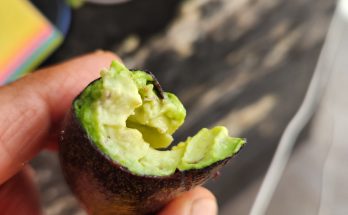By Diana Hoogesteger
What do we think of when we think of Paradise? We imagine a green landscape with beautiful trees and flowering plants, clearwater rivers, animals walking free in communion with humans of all races. We think of harmony and abundance.
What do we imagine when we think of Hell? We think of extreme heat, fire, bare rocky spaces, demons, ugliness, suffering, despair.
If we want to have a paradise on earth, we need to create it. We are co-creators of our reality.
Through history, humans have always changed the landscape. We have built cities in the desert (Las Vegas, Dubai), made golf courses in the jungle, built dams and changed the course of rivers or made them disappear with pipelines underground. We have created some of the most beautiful forests, parks, and monumental gardens, and we have polluted and created the worst living conditions (an atom bomb in Hiroshima, the toxic wastelands in India and Africa).
Today, as we are so many humans on the planet, our use of land is visible everywhere.
In the last 40 years we have seen massive changes. The expansion of agro-industrial farming worldwide keeps growing, as urbanization with housing, commercial and industrial centers. Cities grow like mushrooms on the planet. If you are over 30 years old you must have seen so many known landscapes transform radically.
Earth has lost one-third of its arable land in the past 40 years, and, due to our misunderstanding of the balance in nature, we are facing a point of no return, as many civilizations did before disappearing (Mayans, Egyptians).
We have converted forests, jungles, and grasslands into bare land and dust; rivers abundant in water have run dry.
Climate change, the lack of sufficient clean water and healthy food, the high toxicity and the loss of natural areas are a truth we cannot deny.
What has created this situation? We have, as a collective. Can we change it? We can, as a collective.
How we produce and consume are an imperative fact on the world situation. Water and land use are a good example to reflect on. Around 80 percent of our available water is used for growing crops, and around 33 percent of crops are used for cattle forage. About 30 percent of the earth’s surface is used for cattle. Vegans declare that if we stop eating meet, we will change the world. And we would! But also changing the way we produce food and manage cattle can change the whole situation.
Industrial cattle farms are one of the most polluting industries: It produces huge amounts of methane; free-range animal management is one of the biggest reasons for deforestation and soil erosion. With regenerative cattle management, we can reverse this. Farmers who have changed to regenerative practices are rebuilding the soil and can provide sufficient food from the forage of the land itself, which reduces the need for crop farming for animal use.
Agroindustry with huge expanses of single-crop farming, soil tilling, chemical use of herbicides, pesticides, and additives not only erodes the soil, depleting it of its nutrients but it also brings all those toxins into the environment, air, water, soil, and our bodies as we consume these products.
Regenerative farming not only produces toxin-free nutritional food but also works on rebuilding and increasing living soil. It is based on diversity, having mixed crops where plants give each other the nutrients and protection they need to thrive, combining trees with perennial and annual crops. Instead of harvesting a single product once or twice per year, you harvest different things all year round. Plus it works for carbon sequestration through photosynthesis.
Our bare land fields can become edible forest landscapes, and instead of sucking the water from the underground, we help reestablish the natural water cycles. Condensation from plant humidity comes back in rainfall that is kept in the ground instead of running away, creating floods as happens on bare soils.
Building soil (which is one of the main focal points in regeneration) will help the earth replenish its water springs and keep rivers alive. And as we respect and take care of the natural areas around rivers, we green the land and give livelihood to many important animals and insects.
Regeneration practices are urgently needed to reverse climate change as well as water and food supply for all living beings.
Regeneration is changing our landscapes and with it, well-being and abundance on earth.
Check out kisstheground.com and regenerationinternational.com and learn more about how we can rebuild paradise on earth. This is intelligent and nature-based food production.
The next article will be on how to change the landscape through intelligent urbanization.




